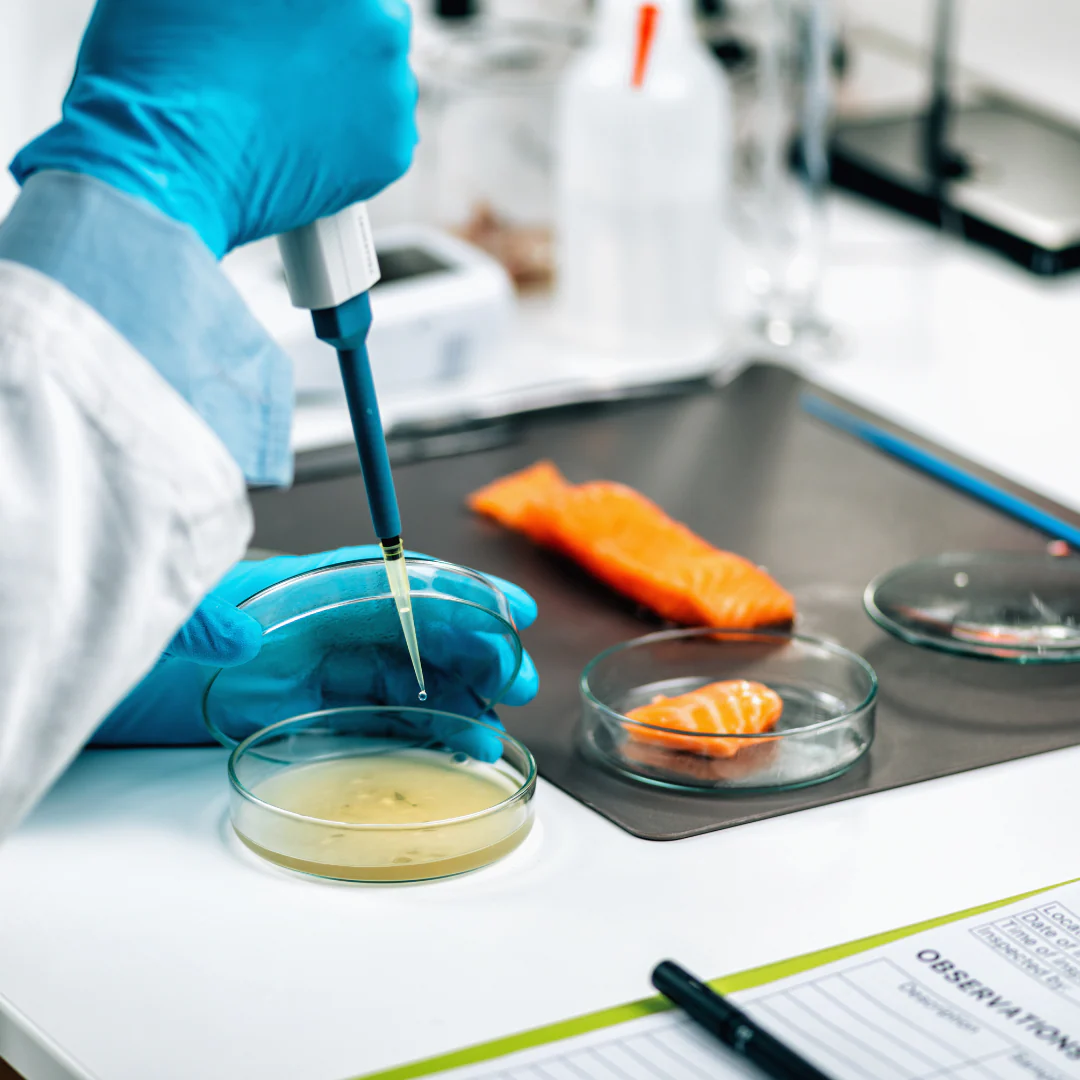Advanced Food Safety Testing Technologies: Ensuring Quality Across Consumer Supply Chains
AI-driven food safety testing technologies transform quality assurance across supply chains.

Executive Summary
The Food Safety, Quality Assurance, and Testing Technologies market, within the Consumer Discretionary sector, is estimated at USD 6.59 billion in 2025 and projected to reach USD 9.68 billion by 2030, representing a compound annual growth rate (CAGR) of 8% for the 2024–2030 period.
Key Growth Drivers:
- Increasing regulatory oversight and enforcement in food production, processing, and distribution
- Rising consumer demand for transparency and traceability, driven by heightened awareness of foodborne illness risks
- Accelerated adoption of rapid and automated testing technologies, including PCR, biosensors, and automated laboratory systems
Public market data for the broader food safety testing segment indicate a 2024 market base of approximately USD 24 billion with mid- to high single-digit CAGRs, reinforcing the outlook for continued expansion and technology-led investment in this specialized vertical.
Outlook:
Positive. Sustained regulatory momentum, advancing testing technologies, and growing consumer awareness are expected to drive continued market growth.

8%
CAGR (2024–2030)
$6.59 billion
Current Market Size (2025)
$9.68 billion
Projected Market Size (2030)
M&A and Investment Activity
Financial & Investment Considerations
Typical Business Models
1.Third-Party Contract Testing Laboratories (Testing-as-a-Service)
Provide steady per-test revenue streams with recurring demand from food processors and retailers.
Pros: Predictable testing volumes, cross-selling opportunities across clients and geographies.
Cons: Labor- and logistics-intensive operations.
Margin and Capex Implications: Moderate to high EBITDA margins with medium capex requirements for capacity expansion and automation.
2.Integrated Services and Advisory Providers (Method Development and QA Consulting)
Combine laboratory testing with method development, regulatory consulting, and quality assurance services.
Pros: Higher margins, differentiated value proposition, and deeper customer relationships.
Cons: Greater R&D and personnel investment requirements.
Margin and Capex Implications: High EBITDA potential with modest capex but increased R&D spending.
3.Equipment OEMs and Instrumentation Providers
Generate revenue through sales of testing equipment, analytical instruments, and related hardware.
Pros: High gross margins and product differentiation.
Cons: Revenue cyclicality, longer sales cycles, and greater aftermarket service requirements.
Margin and Capex Implications: High gross margins; capex concentrated in product R&D and manufacturing capabilities.
4.Consumables and Reagent Suppliers
Offer recurring sales of testing consumables, reagents, and test kits that support consistent cash flows.
Pros: Attractive unit economics, recurring revenue, and low fixed-cost structure.
Cons: Competitive pricing pressure and reliance on end-market testing volume.
Margin and Capex Implications: High gross margins with low ongoing capex needs.
Overall Dynamics:
Business model selection determines the working-capital profile, margin stability, and the balance between fixed and variable costs, influencing scalability and investment intensity across the value chain.


Typical Margin Profile
EBITDA Margin: Typically ranges from ~12–30% across food safety and testing providers. Mature, high-throughput third-party laboratories and value-added service lines tend to operate at the upper end of the range, while small local labs or low-mix testing operations generally fall toward the lower end.
Gross Margin: Varies significantly by sub-segment. Pure testing services often deliver ~40–60% gross margins due to labor and consumables intensity, whereas equipment and instrumentation businesses achieve higher gross margins of ~50–70%, albeit with lower recurring revenue visibility.
Primary Variance Drivers:
- Scale and utilization of laboratory assets, including fixed overhead and depreciation
- Service mix, such as routine screening versus specialized R&D or method development
- Pricing power, particularly the ability to pass through regulatory-driven price increases
- Geographic exposure and contract or reimbursement structures
- Degree of automation, which increases throughput and margins but requires higher upfront capex
Investor Appetite
Level: High
Rationale: The Food Safety, Quality Assurance, and Testing Technologies sector benefits from durable, regulation-driven demand and sustained secular growth as food safety standards tighten and supply-chain scrutiny increases. These factors support predictable testing volumes and strong revenue visibility.
The sector offers attractive margin expansion potential through consolidation, laboratory automation, and consumables cross-selling, while maintaining moderate capital intensity and strong cash conversion for mature labs and consumables businesses.
Offsetting Risks: Regulatory changes, pricing pressure in commoditized testing segments, costs associated with geographic expansion, and labor scarcity can constrain growth or profitability.
Overall, risk-adjusted returns are viewed favorably by investors seeking defensive growth with multiple margin improvement levers and stable long-term demand drivers.


Capex Intensity
Level: Medium
Indicative Range: Capex typically represents ~2–6% of revenue for established third-party testing and inspection businesses. Spending can rise to ~5–10% or higher for companies investing aggressively in automation, new regional laboratory builds, or vertical integration.
Major Capex Categories:
- Laboratory fit-out and specialized testing instrumentation
- Automated sample-handling systems and robotics
- IT infrastructure, LIMS platforms, and cybersecurity investments
- Vehicle and sample-collection fleets
- Capitalized R&D and method development for advanced or specialized testing
Conclusion & Investment Implications
The Food Safety and Testing segment within Consumer Discretionary demonstrates strong fundamentals, with projected expansion from $6.59 billion in 2025 to $9.68 billion by 2030, representing a compound annual growth rate (CAGR) of 8%.
Growth is driven by three primary forces: intensifying regulatory oversight, rising consumer demand for traceability and transparency, and accelerated adoption of advanced testing technologies. The industry is undergoing a period of rapid innovation, led by AI and automation, on-site molecular testing, and digital traceability solutions, all of which enhance detection accuracy, efficiency, and compliance visibility.
Market validation comes from broader food safety testing projections, which indicate sustained mid-to-high single-digit growth across the global market. Although capital intensity and specialized talent shortages present operational challenges, the outlook remains highly favorable.
Supportive regulatory initiatives, such as the FDA’s New Era of Smarter Food Safety, combined with advancing technologies that address rising food safety risks, continue to reinforce long-term momentum. Given the sector’s stable regulatory-driven demand, technological innovation potential, and clear growth trajectory, the Food Safety and Testing segment represents an attractive investment opportunity for investors seeking defensive growth with identifiable expansion catalysts.




